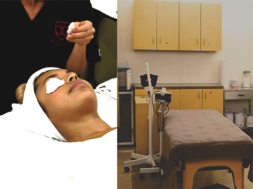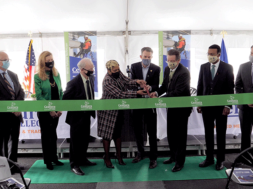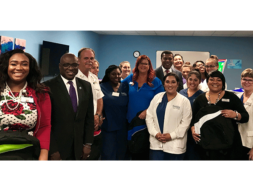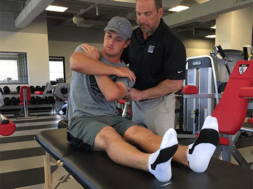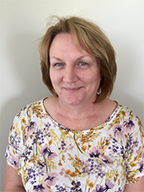
By Ruth Reynard, Ph.D., Education Consultant, http:www.drruthreynard.com
Introduction
Over the years I have worked in education, I have consistently noticed a confusion between learning goals/objectives and learning outcomes. The result of that is often an inadequate understanding by instructors as to what is to be achieved and also a lack of clarity for students in fully comprehending the focus and outcome of a course of study or skill development.
In this article, I will define the critical differences between learning goals and outcomes to help in the instructional planning and design of any course.
Additionally, there seems to be a misunderstanding of the foundations of any context of learning. Everything must begin and end with literacy. That is, all language and literacy skills of listening, speaking, reading and writing must be integrated throughout any course if students are to be successful in comprehending content. They must also be integrated to develop critical knowledge concepts or relevant and effective application of that knowledge in a real life and current setting of use. In short, without literacy skills, no learning at all can take place. Also, in this article, I will explain a generic approach to both the identification of learning outcomes and the integration of literacy development throughout any instructional design.
Goals/objectives and outcomes
As these terms are commonly used interchangeably, readers may think I am making “a meal” of this. I would suggest, however, that the interchanging of these terms is the problem. They refer to different aspects of the learning process; all must work together. However, it is helpful to know which is being focused on where and why in the learning process.
Learning goals/objectives: these refer to specific “building blocks” of information or skill development which should be reflective of the course description and organized and paced effectively through each class meeting or working session. These should also be associated with a rubric so that students are clear about exactly what each goal includes and how learning success can be achieved.
Learning outcomes: these refer to the overall applied knowledge and skills that are achievable when students fully engage and participate in the learning process. These are typically more broadly-scoped than the learning goals and have enough “space” to include the specific style, knowledge, and professional or academic experience of the instructor, the specific professional standards or academic standards of governing and accrediting bodies as well as the various learning preferences of the students. These overarch the entire course and the goals/objectives of each lesson or session. These also must capture the body of information required, the scope of the new knowledge required and the applied use of those and any developed skills in a current and measurable context of use.
If these are confused, then courses are not clearly defined for instructors or students. As outcomes are more broadly scoped, these should be for an entire course, not an individual lesson or meeting/session. Additionally, if learning goals/objectives are used to address an entire course, they will be too narrow in scope and unhelpful for participants. Learning outcomes should be broad enough to support and direct towards new knowledge that students have an opportunity to acquire through the learning process. Learning goals/objectives are too narrow for this. New knowledge is what students acquire with the information and skills learned and developed; how students apply what they learn in a relevant way and for a real purpose.
Therefore, learning outcomes are necessary to guide instructors and students through a broad enough learning process for students to be able to ultimately acquire new knowledge – this may be working through the same information but include each student’s strengths and abilities in order for them to use the new knowledge accurately and authentically.
This also provides ample opportunity for critical thinking and problem-solving to be developed – the ultimate transferable skills no matter what discipline or subject area.
Literacy development
In a recent article I wrote for Campus Technology, “Redefining Literacy in the Digital Age,” (2017), I discuss the current challenges we have across all levels of education here in the U.S. with increasing illiteracy. I also discuss the various types of literacy in our digital era and the reasons why understanding requires that literacy keeps pace with content knowledge and skill development. Otherwise, students will have gaps in their understanding, and ultimately, they will reach a ceiling to their ongoing learning and growth. The ongoing development of literacy ensures that ongoing learning can happen and also that students will understand at the level they need to function well in any professional or academic setting. As stated above, literacy includes all language skills as well as comprehension.
Over the years of my work in higher education and faculty development, I have heard instructors tell me that literacy development is the responsibility of the General Education instructors and the Academic Support services department – if a student has literacy challenges, then he/she should “go somewhere” and “become more literate” then return to class. While intervention strategies and services may help specific processing challenges, the development of literacy skills is the foundation of all learning. Every class meeting or session MUST provide an opportunity for students to use all literacy skills and to practice various kinds or uses of the various language and literacy skills so that they can maintain the content learning at the same time. I would also argue that instructors MUST maintain their literacy development. Instructors who are not continuing to read, write, listen and speak to comprehend and learning new information and trends in their particular profession or academic area, will not be able to maintain their ongoing learning. They will, then, quickly become stale and irrelevant to students.
Instructional planning
Just to be clear, “program” refers to an entire program of study; certificate, diploma, degree. Programs include various individual courses, although there may be a differing number of courses in every program. The number and title of courses should reflect professional and/or academic standards as well as accreditation standards. Each course should, then, reflect a subject area that is required for students to study in order to meet requirements and to be well equipped for employment or further study. Then, each course has individual lessons, meetings or sessions and may be in an on-ground, online, or blended delivery mode. Accreditation may require specific numbers of “didactic” sessions and then “laboratory” or hands-on practice and/or skill development sessions. ALL of these MUST focus on intentional literacy development as well as content-specific concepts and/or skills. Please notice the following terms to observe the flow and stages of planning:
Program
↓
Course
↓
Lesson/Session
↓
Lab/Hands-On Practice
↓
Assessment/Evaluation
Each of these stages flows from the one before. Therefore:
Program of study – a program should have a narrative that describes the scope of the program, as well as learning outcomes that are broad enough to encompass every course and every lesson/meeting in that course.
Course – as many courses as are in a program of study, each should have individual course descriptions and, again, learning outcomes that are still broadly scoped and reflective of some of the learning outcomes outlined for the entire program. This way, instructors and students will know how each course fits into a program of study and why the courses are sequenced as they are.
Lesson/session – every meeting or session within a course should have specific learning goals/objectives which are clear and feasible within the time constraints and realities of a course. Having too many goals/objectives is unreasonable and leads to frustration and confusion on the part of instructors and students.
Lab/hands-on practice sessions – these should also have clear goals and objectives that reflect back to the learning outcomes of the course. Students and instructors should have no doubt as to what is being addressed in each of these sessions and how that ties back to their overall learning in the program.
Assessment/Evaluation – as well as planning for projects and tests and exams and feedback surveys, each of the stages listed above should provide students with a rubric that clearly outlines the learning outcomes and how each one can be fully achieved. Rubrics truly help clarify the expectations of the entire process (Reynard, 2008; Weimer, 2013).
So where does literacy come in? I would suggest that each lesson or class meeting or learning/practice session either online or face-to-face, should have intentional, content-relevant activities planned during which students can practice all language and literacy skills and develop more ability in each. Therefore, as you are planning for these meetings or sessions, ask yourself the following:
- Does this activity provide students with an opportunity to read on their own?
- Does this activity provide students with an opportunity to write?
- Does this activity provide an opportunity for students to listen?
- Does this activity provide students with an opportunity to respond and/or speak?
While each activity may not include all of the above, by asking yourself these questions, as an instructor, you are more likely to plan for the language and literacy skills to be included in a session. This includes online which, currently, should always include mixed and multi-media resources and activities for students. Additionally, make sure you assess the skill level of each of these skills being demonstrated by students. If students are struggling, include more practice and, if needed, additional intervention activities that will develop stronger literacy skills.
Summary
All stages of instructional planning are critical to student success and, I would suggest, to instructor success. Being aware of what and why various outcomes are identified and how each learning goal/objective is connecting back to the outcomes, is vital. Additionally, purposefully planning for literacy development will ensure the overall learning ability and ongoing success of each student. Many instructors I have worked with focus only on a specific course they are teaching. It is vital for every instructor, even adjunct or part-time instructors, to become familiar with the entire program of study, the outcomes, and the flow of all stages of the learning process, so that he/she can plan effectively for the course he/she is teaching. Additionally, make sure adequate assessments are in place and that these also support the skills and knowledge being developed. In short, instructional planning is a process and is intentional if overall student success is the ultimate outcome.
References:
Ruth Reynard (2017). Redefining Literacy in the Digital Age. Campus Technology.
Ruth Reynard (2008). 21st Century Teaching and Learning: Assessing New Knowledge. THE Journal.
Maryellen Weimer (2013). Should you be using Rubrics: Faculty Focus.
DR. REYNARD has over 20 years’ experience in adult, community, and higher education in the U.S. and Canada. She has worked extensively with program managers, faculty, and departmental administrators to design instructional programs in various academic and vocational program areas and deliveries. In addition, she has developed customized English Language programs in N. America, China and the Middle East. These programs were enriched by her personal and educational exposure to language and culture in N. America, Europe, China, and Africa. Ruth holds a Ph.D. from the Ontario Institute for Studies in Education, University of Toronto (OISE/UT). Her graduate work focused on diversity awareness, inclusive curriculum planning, instructional design, distance learning, and Internet-mediated learning environments. Dr. Reynard has regularly contributed to online publications such as Campus Technology and T.H.E. Journal and currently edits a teaching journal for career faculty published by Pearson Publishers.
Contact Information: Ruth Reynard, Ph.D. // Education Consultant // 224-520-4109 // ruthreynard@gmail.com // www.drruthreynard.com

